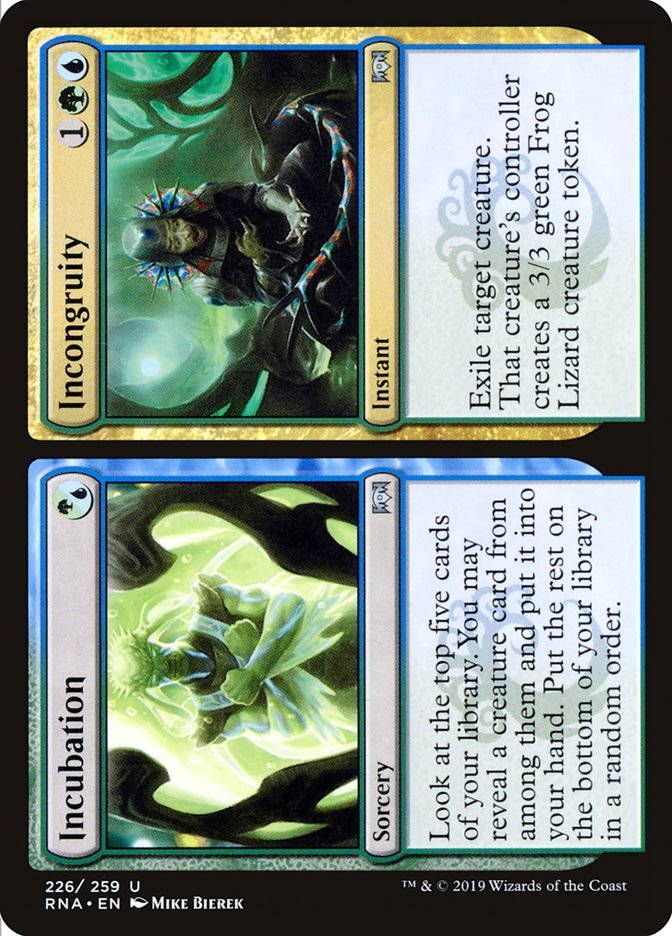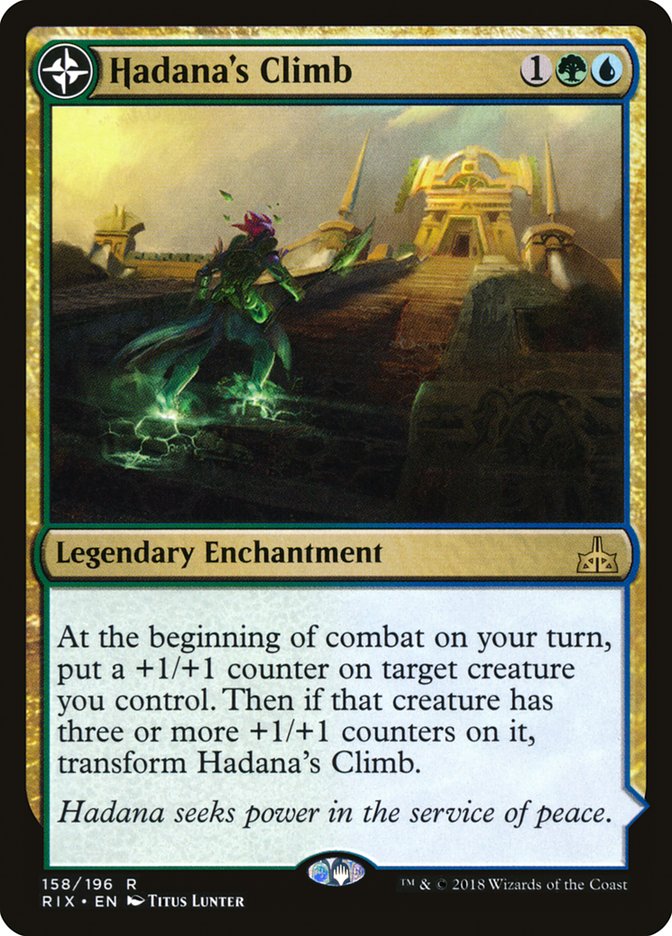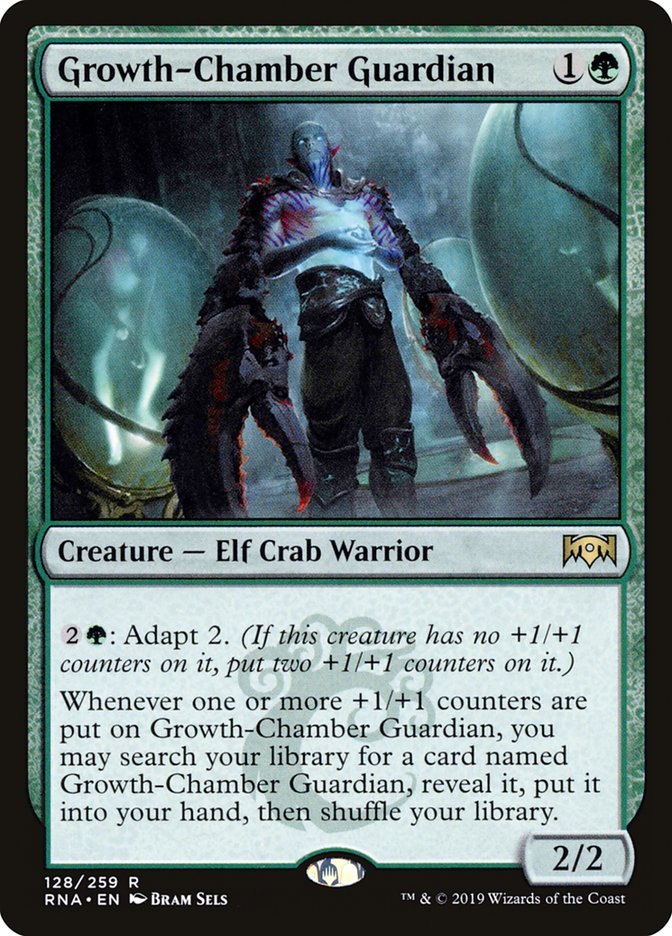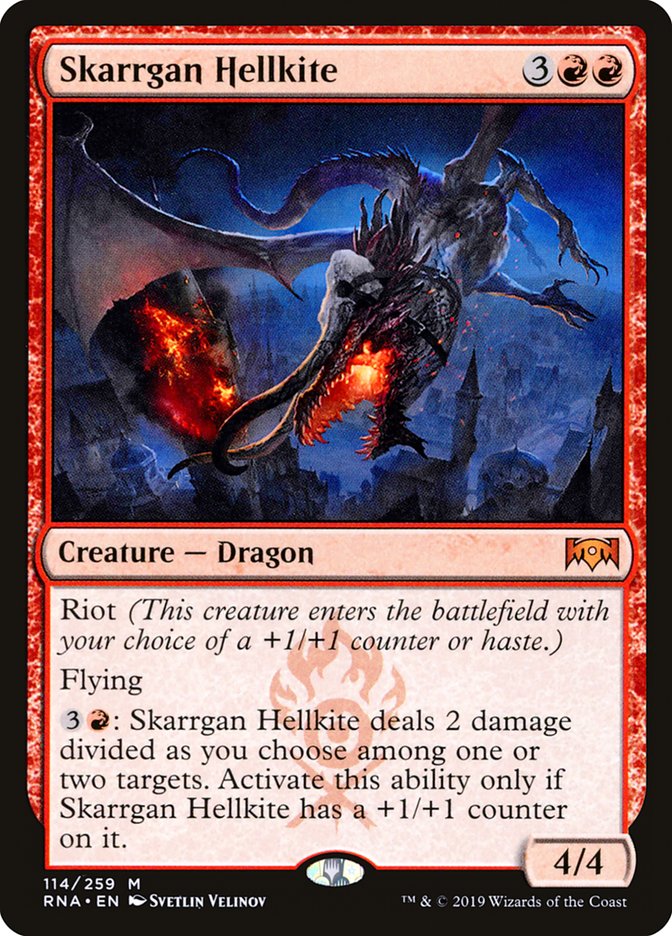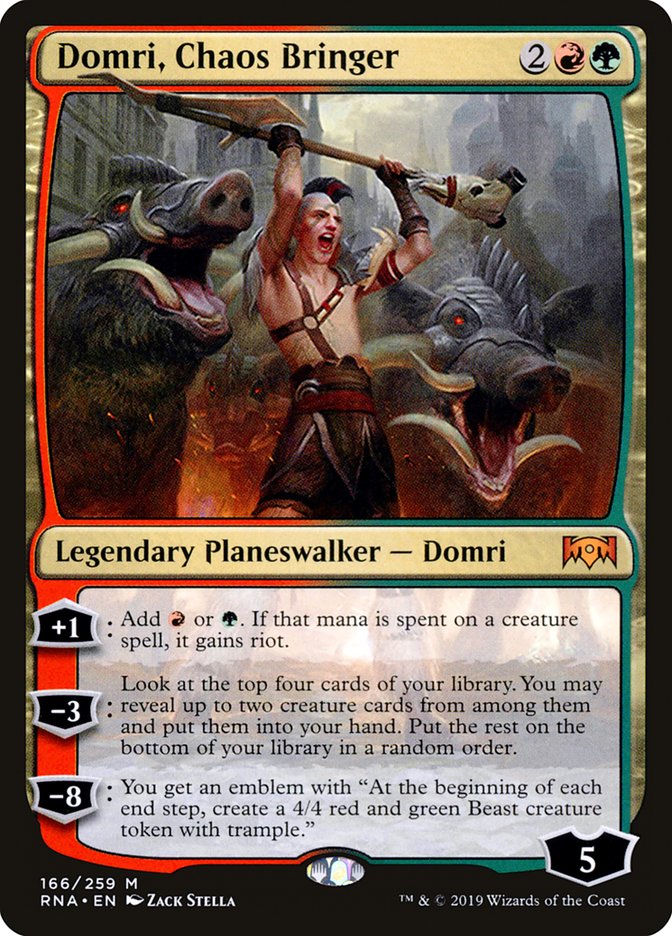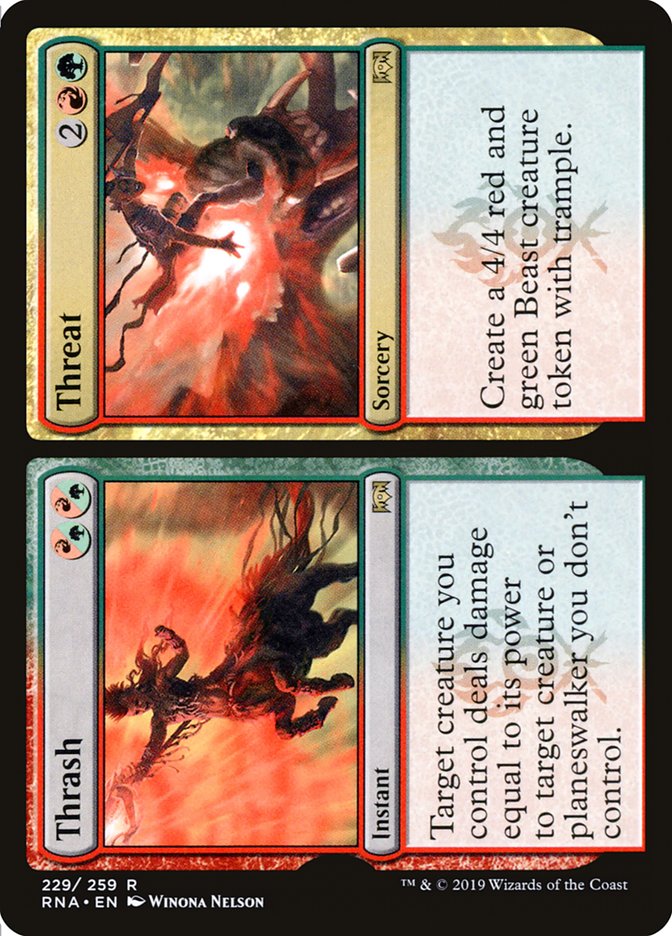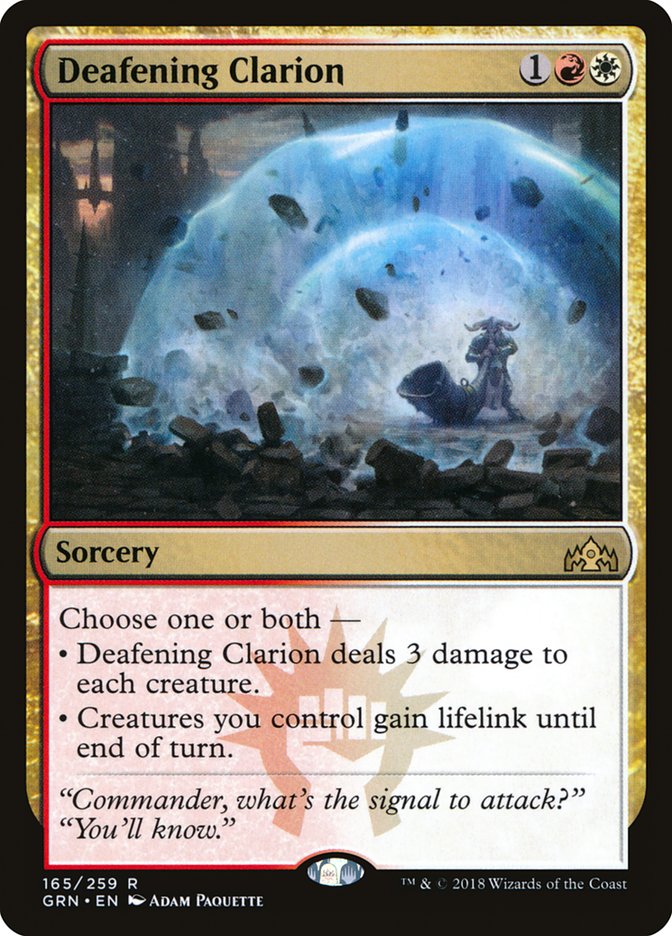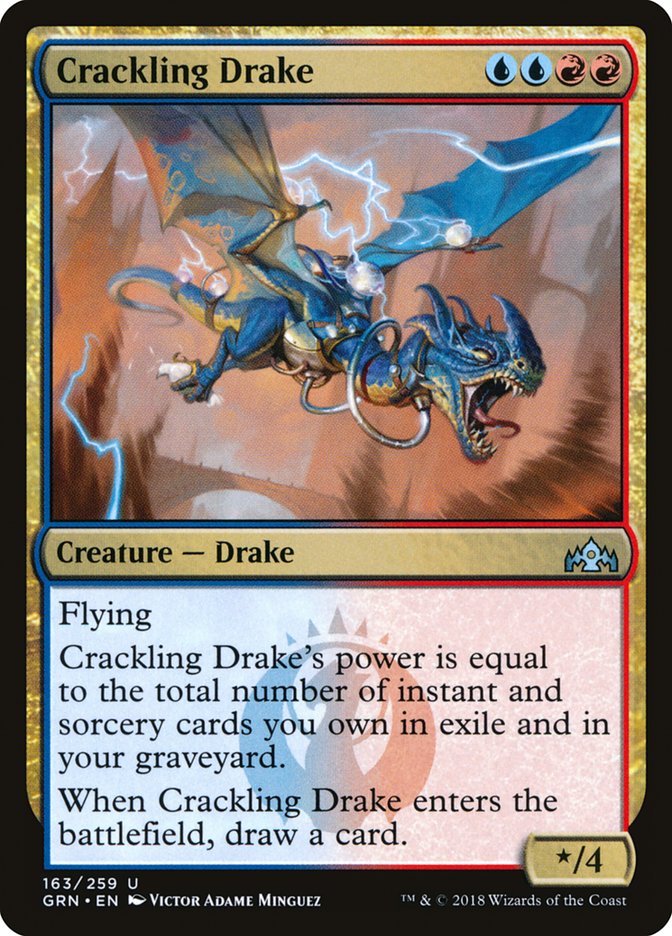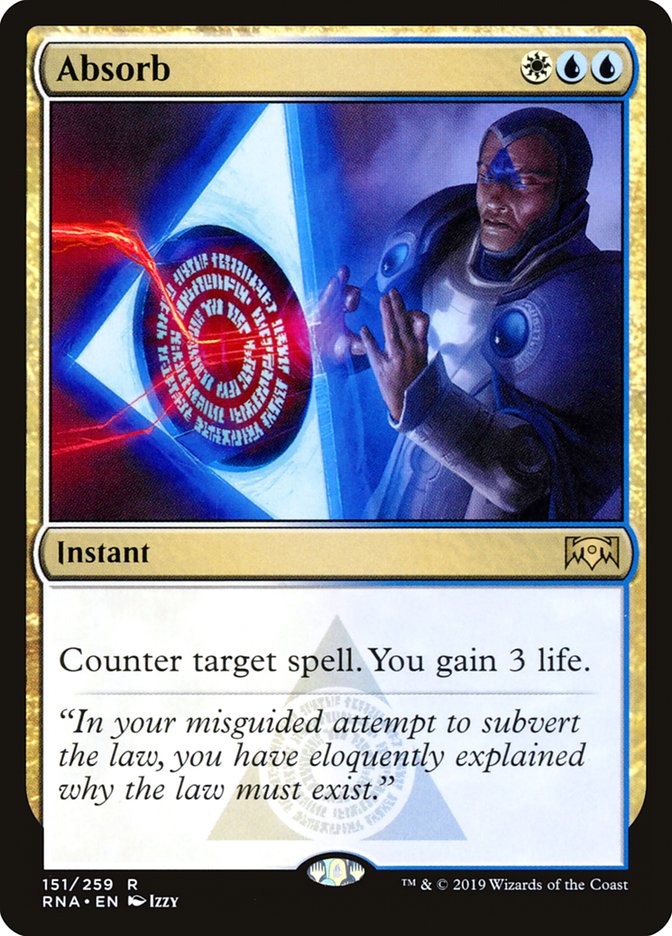The first Magic Arena ranked season is winding down, and the last few weeks
are sure to be hectic. Ravnica Allegiance is upon us and with it
comes the unlocking of Standard mana as we finish the cycle of shocklands.
Many of my waking hours have been spent grinding and practicing games in
the best-of-one environment, and today I’d like to share my general
philosophies on best-of-one play and strategies that are worth exploring
with this expanded card pool.
For those new to ranked Arena play, how the metagame has developed is a
real surprise. Compared to a tabletop metagame that prominently features
Golgari Midrange and Izzet Drakes, you should instead expect most opponents
to be playing an aggressive strategy. There are a few important
distinctions that have caused this shift, with the first being how you
ascend the Arena ladder. Winning a traditional tournament only allows room
to drop a match or two along the way, while climbing the ladder is a
numbers game. To reach the highest heights, all you need to do is win more
than half of your matches, so the upside of fast games that aggro provides
has tangible worth.
Losing the ability to sideboard also changes how you want to construct your
deck. Without the ability to pivot between gameplans, the fundamental
problems of midrange decks are exacerbated. While traditional Golgari decks
might prefer Cast Down, one might feel pressure to opt for Assassin’s
Trophy to minimize the number of dead cards as potential draws. In my
experience, the best way to avoid this problem is to minimize the
interactive elements you play and focus on being as proactive as possible.
With linear aggro also being aided by a hand randomization system that
provides you with a stable number of lands most every game, it’s no wonder
that these decks are the big winners of the switch to best-of-one.
Without further ado, I’d like to present my choices for archetypes that I
believe can flourish on the ladder with Ravnica Allegiance:
Creatures (31)
- 4 Llanowar Elves
- 4 Merfolk Branchwalker
- 4 Jadelight Ranger
- 4 Steel Leaf Champion
- 2 Nullhide Ferox
- 2 Kraul Harpooner
- 4 Pelt Collector
- 3 Zegana, Utopian Speaker
- 4 Growth-Chamber Guardian
Lands (22)
Spells (7)

I’ve long been a fan of the Mono-Green Aggro archetype, and with Ravnica Allegiance comes a surprising number of upgrades.
Incubation/Incongruity is a seemingly innocuous addition that I believe
will do excellent work in tying the room together. With only four slots,
Incubation grants increased consistency and Incongruity a removal spell of
the quality that Simic decks infrequently get, giving you outs to otherwise
terrifying cards like Rekindling Phoenix and Niv-Mizzet, Parun.
Hadana’s Climb has been at the peripheries of Standard for months, and I
believe we now have a critical density of cards that grant and care about
+1/+1 counters to truly make it shine. Growth-Chamber Guardian is also a
star here, as it curves nicely into the Climb. This sequence grants you
another copy of Guardian, and you can repeat this play pattern turn after
turn as you continue to deploy your extra copies.
Climb also serves as a layer of insurance for the three copies of Zegana,
Utopian Speaker. Without Zegana’s enters the battlefield trigger, I don’t
believe it hits the mark as a playable Standard card, but with Climb and
sixteen creatures that can grant themselves counters, it seems trivial to
enable.
With Breeding Pool, we have what I suspect is an excellent manabase, which
is crucial when your strategy revolves around closing out the game in the
fewest turns possible. Simic Aggro is a linear deck that I ultimately
believe is powerful and now has the mana to make it a true contender in
Standard. However, Simic is not the only green guild that has caught my
eye, as I’ve also spent some time considering the possibilities of an
aggressive Gruul deck. This is my preliminary list:
Creatures (28)
- 4 Llanowar Elves
- 4 Merfolk Branchwalker
- 4 Rekindling Phoenix
- 4 Jadelight Ranger
- 4 Gruul Spellbreaker
- 4 Skarrgan Hellkite
- 4 Growth-Chamber Guardian
Planeswalkers (2)
Lands (24)

This deck is very reminiscent of the Gruul Monsters list my friend
Tyler Schroeder used to win Grand Prix Memphis
last year. The package of explore creatures provides consistency as you
work up a curve topped by impactful four-power fliers. While Skarrgan
Hellkite is no Glorybringer, I suspect it will leave a rather impactful
mark on Standard. By placing the hasty 4/4 in an aggressive shell, we
effectively maximize the damage potential it provides and when Hellkite is
paired with Growth-Chamber Guardian – seriously, buy this card…it is
going to be incredible – the deck contains a solid pair of both mana sinks
and forms of card advantage.
Speaking of card advantage, while I included two copies of Domri, the
strategy is not married to the new planeswalker. While 28 creatures gives
you a reasonable number to realistically draw two cards off of Domri’s -2
ability, we aren’t able to fully realize his ability to ramp. That being
said, riot still can grant our creatures game-winning haste against
opponents who are close to stabilizing at a low life total.
When it comes to interaction, I’ve opted to hedge between the powerful Lava
Coil and newcomer Thrash. While “punch” removal spells have never been
players in Standard, I believe that’s because they often miss two critical
components present in this new split card. When it was pointed out to me
that this card can deal damage to planeswalkers, I had to do a double take.
When you combine the flexibility of instant speed and opportunity to target
a creature or a planeswalker with the ability to make a 4/4 should the
battlefield be empty, you have what should be a highly impactful removal
spell.
While unbridled aggression may be the most common path to success on the
ladder, there are other viable paths to victory. Before the printing of Ravnica Allegiance, I had exceptional results with Jeskai Control,
and I’ve made some slight updates with the new set in mind.
Creatures (7)
Planeswalkers (4)
Lands (25)
Spells (24)

Jeskai represents a different approach to the best-of-one environment.
Since this is a deck that is naturally inclined to interact, there’s the
legitimate risk that your removal spells don’t line up correctly and you
may drop some games because of that. The upside to this approach is that
it’s incredibly powerful against the aggro decks of the format, owing
largely to the combination of Deafening Clarion and Crackling Drake. Having
both an undercosted sweeper and a supercharged Wall of Omens that forces
your opponents to overextend creates a difficult situation to navigate.
In the aggro-dominated world of Arena, the addition of Absorb is not to be
overlooked. The lifegain helps stem the bleeding of a shock-filled manabase
and provides a critical density of lifegain cards. Each Absorb should buy
you more time and draw steps to find another copy of itself or Deafening
Clarion, which combines with Niv-Mizzet or Crackling Drake to represent an
almost insurmountable life total advantage.
One distinction of current Jeskai lists from other historical Standard
control decks is the quality of threats. Teferi and Niv-Mizzet can both be
deployed onto an empty battlefield and put your opponent to the test,
forcing them to have interaction in a small window before your threats put
the game out of reach. This powerful proactive gameplan can let Jeskai off
the hook in the games where your removal lines up poorly and is a core
reason I believe it will continue to be an excellent choice moving forward.
Ultimately there will be no shortage of powerful cards entering Standard in Ravnica Allegiance. With the cycle of shocklands now complete, I
truly think that the best Standard format in years just got that much
better.


